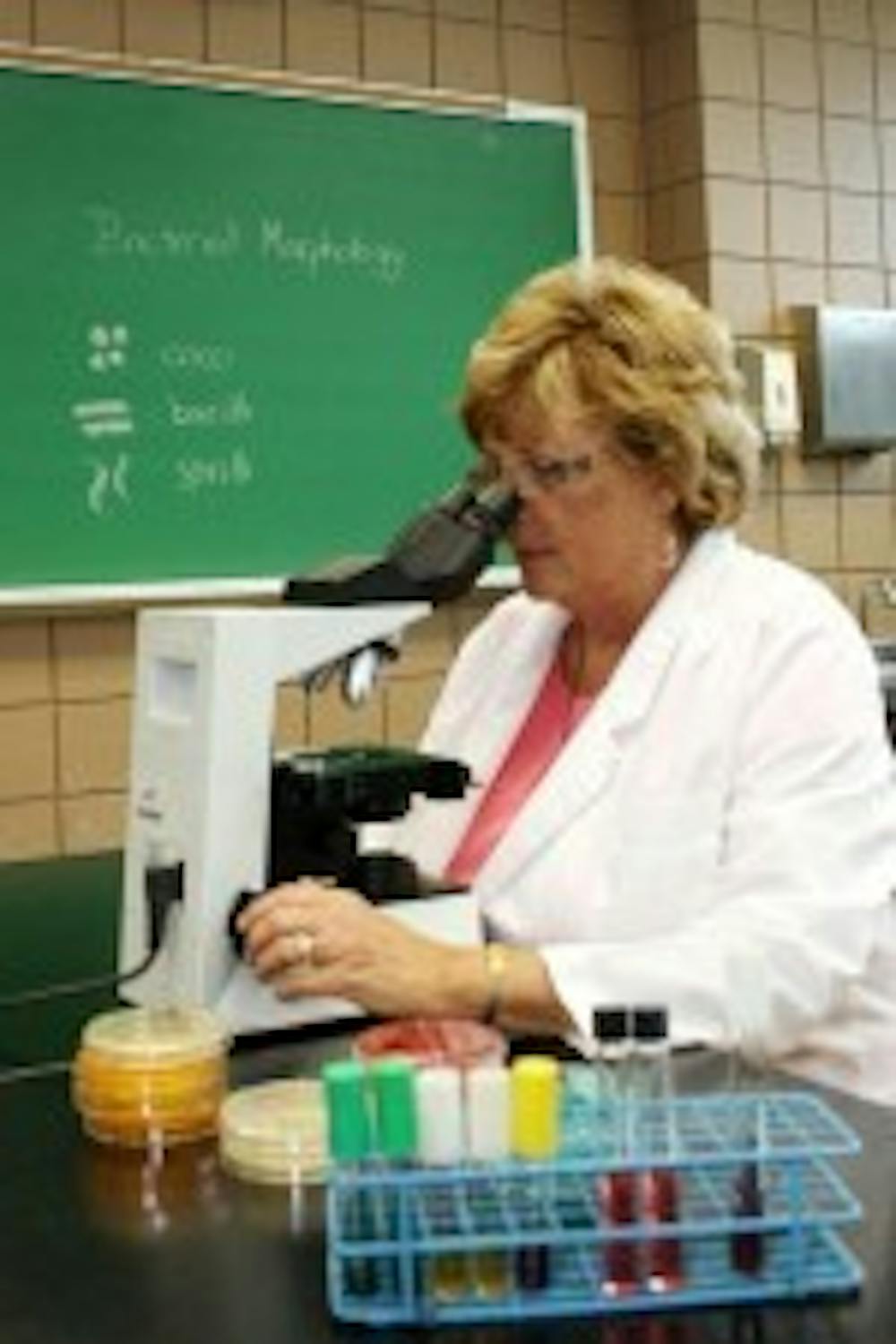As the United States continues healing from the 2008 financial crisis, the unemployment rate for those under the age of 25 remains near 15.6 percent, according to the Wall Street Journal. The unfavorable statistics are impacting this age group, mainly comprised of new college graduates.
Though many young Americans seem to be struggling to find work in their respective fields, the majority of graduates from medical technology programs, like the one offered by the UB School of Medicine and Biomedical Sciences, cannot relate.
Medical technology, a form of clinical laboratory science, employs a variety of analytical methods to test bodily tissues and fluids with the intention of effectively diagnosing and treating disease. In recent years, these laboratory professionals have experienced little difficulty finding work. High employment rates are common in the field - especially locally.
Carol Golyski, the director of UB's medical technology program, attributes this largely to the aging of the current workforce of clinical laboratory professionals.
"Studies have been done and they're finding that the average age of the working laboratory professional is about 50," Golyski said. "It's a little higher in Western New York - about 54 - so there are people who've been working for years and years and they're starting to get to that retirement age."
The ages of current medical technologists has benefited the graduates of the relatively small classes of UB's medical technology program. Every student in the class of 2012, which consisted of fewer than 30 students, found a job after graduation, according to Golyski.
In a survey Golyski administered to the class of 2013, 23 out of 25 students who responded found employment in the field of medical technology.
The likelihood of getting a job after graduating is a draw for many students, but completion of the program itself does not come easily. Medical technology is a "2+2" program, with students taking many prerequisites in basic biology and chemistry during their freshman and sophomore years before applying to enter the medical technology program as a junior.
From here, the remainder of the 105 credit hours required for the major is rigidly defined, with students taking courses in immunology, biochemistry, hematology and other various specialty fields. The intensity of the workload isn't a complete turn-off for students, with some, like senior medical technology major Beth Olscamp, citing the good job outlook as motivation enough to complete the curriculum.
"The program is strict and life itself is stressful, so it's relieving to know I won't have to worry about finding a job when I graduate," Olscamp said in an email. "I know that I will be prepared to go out into the workforce with confidence after my degree is completed. I know that this is the job I was destined to have and I am thrilled with my decision."
Olscamp, who was always interested in health sciences but unsure of exactly what she wanted to pursue, said the hands-on experience she was bound to have in all of the lab classes appealed to her.
This hands-on experience is something all medical technology students get before graduating. In addition to the many credits worth of lab courses they must complete on campus, students spend the entire spring semester of their senior year in clinical rotations at health care facilities and laboratories in Buffalo and the surrounding area.
"We're affiliated with several hospitals here in Western New York, but we also branch a little bit out towards Rochester, Canandaigua, Wellsville and Dansville," Golyski said. "Our students go to these hospitals as well because these places are calling us and begging for us to send students because they want to use it as a recruitment."
Medical technology students are so heavily recruited that some hospitals have even started paying new employees starting bonuses of up to $10,000, which is paid out over their first few years at the job, Golyski said.
She added that the need for medical technologists and other laboratory professionals will only be increased with the full implementation of the Affordable Care Act - more commonly known as "Obamacare."
"With something like Obamacare, with everybody having to have insurance, there's going to be a greater need for blood tests," Golyski said. "So we're going to need more people to work in the field."
UB is trying to play its own role in the development of more technologists and hopes to increase the size of the program through the acquisition of more funding, thanks to the efforts of John Tomaszewski, professor and chair of the Department of Pathology and Anatomical Sciences, Golyski said.
Additionally, she hopes the program will be able to acquire more classroom and dedicated lab space after the opening of the new medical school in the fall of 2016.
The average salary of medical and clinical laboratory technologists and technicians is about $46,680, according to the Bureau of Labor Statistics. UB will offer an introduction to medical technology class in the fall.
email: news@ubspectrum.com





